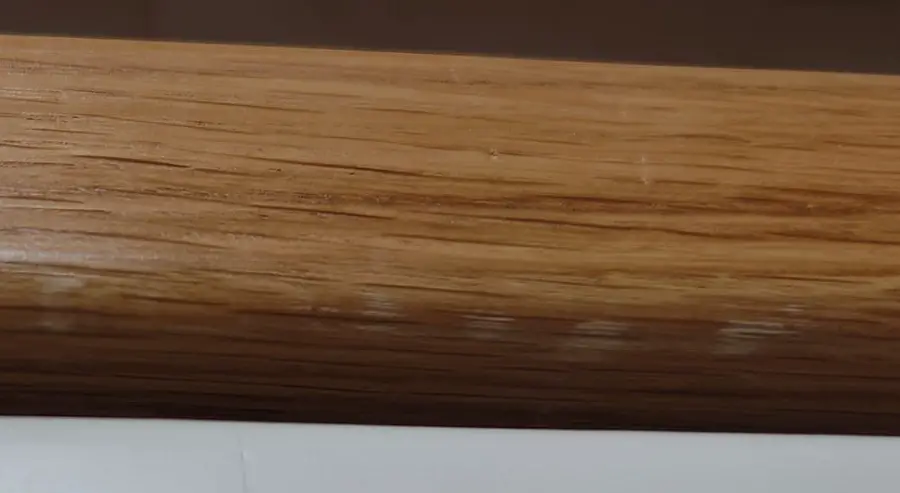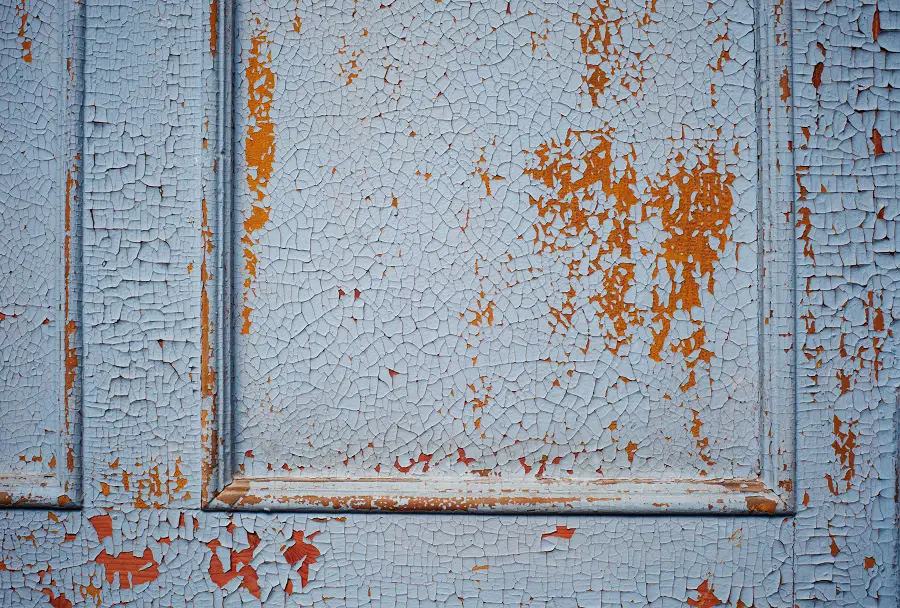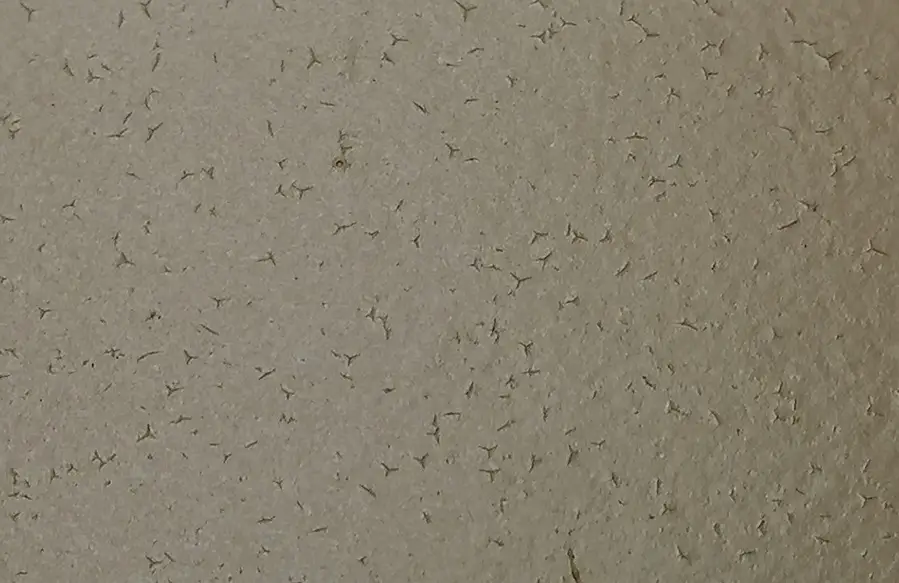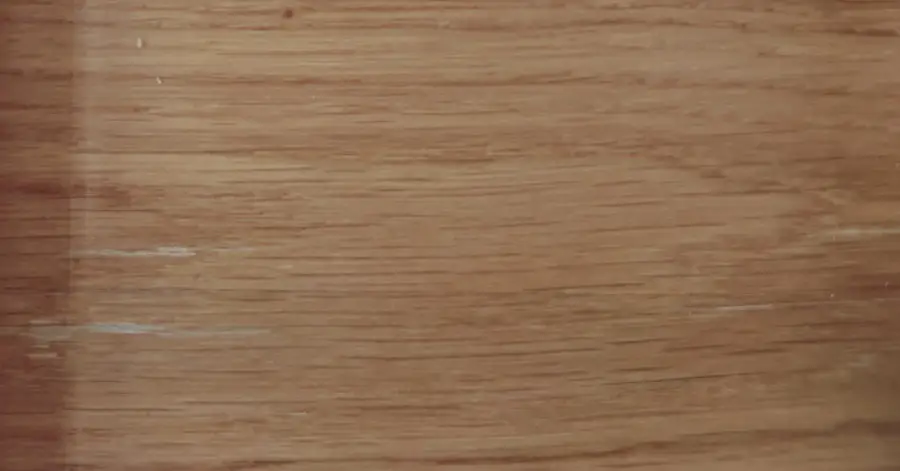It is one of the most frequently asked questions in article comments or seen on specialized groups. Unfortunately, as simple as the question is, the answer is complicated. Even if it is the varnish that is cracking, the problem may be related to the wood it was applied to, the application method or environmental conditions, not just the varnish. And a correct answer cannot be given without knowing these details.

In general, the varnish film on furniture or other objects can crack for four reasons:
- Lake quality
- Problems of the substrate on which it was applied: wood, MDF, veneer
- How it was applied
- Environmental conditions
Let's take them one by one.
1. Varnish quality leads to problems that cause film cracking
Again, things are not simple and there may be several causes:
- The lake cracks because the layers are not compatible
Lacquers are of many kinds - water-based or solvent-based, catalyzed or non-catalyzed, with different base resins (nitrocellulose, polyurethane, alkyd, etc). This characteristic means that, in most cases, these varnishes behave differently and cannot be applied one over the other. They are said to be incompatible products. For example, a polyurethane varnish can never be applied over a nitro varnish, and an alkyd varnish never over a nitrocellulose varnish or other varnish based on organic solvents. In both cases the film will crack immediately after drying. Even if there are situations where varnishes of different types do not have compatibility problems, it is recommended to use successive coats of the same type. Only alternate different varnishes when you know very well how they will behave or if recommended by a specialist.

- The lake is cracking because the layer is too thick
Thick layers of varnish (in fact, any finishing material) tend to crack. The defect does not appear immediately, but over time. The basic rule in finishing is: several thin coats are better than one thick coat.
- The lake is cracking because it's too hard
Very hard lacquers, such as parquet, generally have low elasticity. They should therefore be protected from strong mechanical shocks (knocks) because they can crack like glass or a mirror. Do not use such varnishes where you know the shocks will be severe. Also, don't use them on wood that is not well dried or that tends to vary greatly dimensionally (move) when the outside humidity varies. This is why varnishes used outdoors or for window finishing are softer and more elastic.
- The lake cracks because it's brittle
The lacquer film can become brittle if more catalyst is added than recommended. The varnish loses its elasticity and becomes shock-sensitive, cracking like glass even when not too hard.
- The lake is cracking because it has been stored or transported in improper conditions or because it is expired
Storage and transportation conditions are very important. For example, water-based varnishes should not be stored at temperatures below 5°C. If they freeze, they cannot be used after thawing. For example, when applying a water-based outdoor varnish that has gone through a freeze-thaw cycle, small cracks and opalescent areas will appear on the surface. Equally important is respect of the guarantee period mentioned on the packaging and the conditions under which the lake can be used after opening the packaging.
In the vast majority of cases where cracks are to blame, the cracks are oriented in all directions. This is how they can be distinguished from those caused by wood movement, which are along the grain or at the joints between members.
2. The varnish may crack because of the substrate on which it is applied
Support cracks are most common on solid wood pieces, but there are situations when they also occur on MDF or veneer. Let's look at the conditions that favor them.
Cracks in the film applied to solid wood parts occur if the wood is not dry enough, if the construction solutions chosen are wrong or if the humidity in the space where the lacquered object is kept is very low or very high. It all has to do with swelling and shrinkage of wood as the outside humidity changes. The varnish film cannot cope with these sometimes very strong movements and cracks. The cracks this time follow the grain of the wood or the joint lines between elements. To avoid problems, the wood should be properly dryThe coating should be done on all sides so that contact with the outside is minimized, suitable construction solutions should be chosen and more elastic varnishes should be used.
Although it is considered a very stable material, cracks can also appear on MDF elements. This is caused by the poor quality of the MDF, which is more loose and porous. There is air in the pores which tends to escape at higher temperatures (drying tunnels, very hot summer days). The air pushes into the varnish or paint film and breaks it. The cracks in this case are specific, like little stars with irregular rays around a central point (see picture below). The film looks like a sheet of paper that has been pushed into with a pencil and torn at the tip of the pencil. The solution is to choose quality MDF or apply an insulator as a primer.

In the situation cracks in wood or veneered panelsProblems can arise from too much adhesive. The glue gets into the pores of the veneer and decreases the adhesion of the varnish film. It peels off easily if it is knocked, even if very lightly, the area whitens and the film breaks. The cracks look like broken glass. It is a defect that is occurring less and less, veneering is now a much more controlled process.
3. The varnish may crack as a result of the way it was applied. For quality results, follow the recommended technology
Even well-chosen lacquer, well-dried wood or quality MDF can spoil everything if application technology and instructions are not followed. In order to avoid cracks in the varnish film you need to pay attention to the following points:
- Wood sanding must be made so that there is a good adhesion. If the film does not adhere well it will peel off and crack. Sand with wood sandpaper (max.220). Using too fine paper clogs the pores and reduces adhesion.
- Mix the components in the proportions recommended by the manufacturer. In case of catalyst varnishes, too much catalyst causes the film to become brittle (if too little is added, the film remains soft).
- Catalyzed lacquers have a pot-life. Do not use the mixture after this time, especially if it has started to thicken. Diluting it doesn't solve the problem. The varnish has already lost some of its properties and the resulting film will soften or crack.
- Do not apply thick coats! Dilute the varnish according to the instructions and apply the recommended grammage. Better 2-3 thin coats than one thick one.
- Respect the drying times. If the bottom layer is not properly dried, the top layer may crack.
- Sand between coats to increase adhesion. If the varnish peels easily it will also crack easily.
- Do not apply two topcoats if the manufacturer recommends only one. The varnish may contain paraffin or other substances to improve the stain or appearance. The coat applied after these substances have migrated to the surface will not adhere and will crack.
- If you want to change the look of a piece of furniture or repair it, check the compatibility of varnishes beforehand. Apply the new varnish to a more hidden area and let it dry. If nothing happens after drying, leave it until the next day and tap the surface lightly. If it does not peel or crack, the materials are compatible.

4. The varnish may crack due to environmental conditions. Temperature and humidity in the working space influence the quality of the varnish film
Temperature and humidity are important not only when transporting and storing lacquers, but also in the workspace. The best results are obtained if we have temperature in the range of 20-22°C and humidity of 60%. It is difficult to have such conditions if the environment is not controlled, but it is still possible to work with good results at lower or higher values. But avoid working at very low temperatures, below 10°C, because adhesion decreases and the film can crack. Also, at very high temperatures, the solvent evaporates quickly and there is a risk that the coating will be too thick.
As you have seen, varnish film can crack for many reasons. If you ask such a question and the answer comes without asking about the type of varnish, how it is applied, what it is applied to, chances are it is not the right one.
I hope you find the above information useful. As always, additions are welcome. And if you have any questions or queries, please leave them below in the space provided. I will certainly reply.




































Hello!
I want to finish a new (never been dated with anything before) resin wood floorboard. I could use Oskar silicone lazur lacquer - based on alkyd resin silicone additive (solvent based) one coat, (I did a test and it looks good, quite intense-nude alum) and a Vitex lussolac solvent based polyurethane lacquer?
The problem I see is the heavy smell and yellowing of the solvent-based varnish over time, although on the alum shade I don't think it will show much, as it's already a warm shade with a hint of amber.
Or should I still use a water-based dip and a water-based polyurethane varnish, also from Vitex?
I would like to get a warm-rich shade with a matte or semi-gloss film that can withstand medium traffic, scratches, wash well (Kitchen and hallway, areas that get dirty easily).
Thanks for your help, I really appreciate what you do here.
Hello!
Alkyd varnish is not compatible with polyurethane varnish, so the former does not work.
The lazings, although they can also be used indoors, are mainly for outdoors. They are more elastic, i.e. less hard. They are not the best choice for floors.
You can use solvent-based or water-based stain. The important thing is that it is the colour you want and that it is thoroughly dry before applying the varnish. On top apply a harder varnish, especially for traffic (parquet varnish). It holds and cleans better. Polyurethane varnishes are not all the same, they have different hardness and abrasion resistance.
In conclusion, the second option is good, provided that the lake is resistant to traffic.